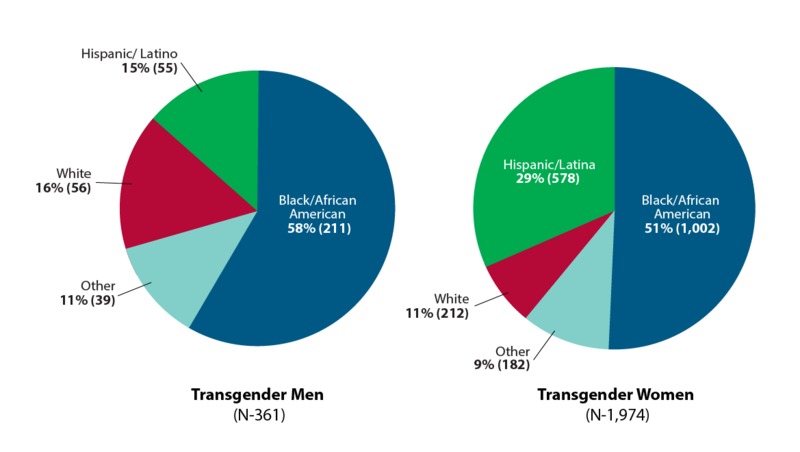Statistics
This section will discuss how often transgender African American women are affected by HIV/AIDS, some of the possibilities on how they contracted the HIV/AIDS virus, and medical discrimination. African American transgender women face many issues with the HIV/AIDS virus, at 51% African American transgender women are a disproportionately diagnosed group. According to the CDC, few healthcare providers have proper training to help transgender individuals which can lead to lack of proper care to meet their everyday needs. Additionally, the section will bring up discrimination factors African American transgender women face in their daily life whether it’s socially or professionally. It’s more difficult for African American transgender women to obtain professional jobs which causes them to turn sex work. Using their bodies opens them up to higher chances of being infected with HIV by unprotected sex practices, casual partners and intravenous drug use. Also, sex work can open the door to violence.

HIV Among Transgender People
According to the CDC "Despite the high risk for HIV/AIDS infection previously reported among transgender populations, nearly two thirds of transgender women and men in the sample reported never testing for HIV, which is consistent with evidence suggesting that many HIV-infected transgender women are not aware of their status" (HIV Testing Among Transgender women and men). This quote gives a partial explanation on why black transgender women have such higher rates statistically over other races.
Upon further research we've found statistics showing that 50% of transgender people experience sexual violence at some point. Also from the same source one in ten transgender people were sexually assaulted in a healthcare facility. (statistics are from National Statistics). Unfortunately, transgender people not only have to deal with improperly trained medical health care providers but also sexual predators in the same facilities.

